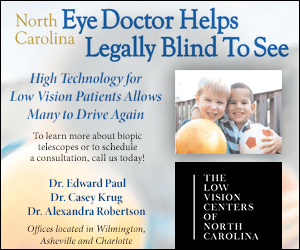15 Common Misconceptions About Agriculture
Clarifying 15 common misconceptions about agriculture, including myths about ethanol, organic foods, corporate farms, livestock and crop production.
Farm Bureau |Fact or fiction? Clarifying 15 common misconceptions about agriculture.

1. Producing ethanol is unwise because it takes more energy to produce than it yields.
In fact, for every kilocalorie used to produce ethanol, 1.67 kilocalories are produced. Researchers have discovered that a gallon of ethanol contains at least 70,600 BTUs more than it takes to produce (BTU is the acronym for the “British thermal unit” which is used in North America to describe the heat value and power of fuels.) A recent USDA publication states that “new drymill ethanol plants now use only about 30,000 BTU of thermal energy and less than 1 kilowatt hour of electricity to produce 1 gallon of ethanol and byproducts.”
2. Natural = No harm
People commonly assume that if something is natural, it can pose no risk or harm. However, nature disproves this belief. For example, nicotine, opium, heroin, morphine and cocaine all come from plant sources, and there are many toxins and carcinogens that occur naturally.
3. Organic food production does not use pesticides or synthetic fertilizers.
Organic production can use “natural” pesticides, which include mineral salts and pesticides from plant materials. Organics can also use synthetic or biological pesticides.
4. More wheat is directly consumed by humans than any other grain.
This is true. Wheat is the world’s major cereal crop, and it accounts for 31 percent of the global cereal consumed by humans. Rice follows in second place at 21 percent.
5. Eating beef is the reason that methane in the atmosphere has tripled in the past 100 years.
While ruminant animals, such as cows, do emit methane, they are not the leading producers. Other sources include landfills, wetlands and swamps and anaerobic septic tanks. Energy production is the leading contributor to the output of methane in the United States. According to the EPA, overall U.S. methane levels declined 5.1 percent from 1990 to 2007, and methane from livestock accounts for only 2.6 percent of total U.S. greenhouse gas emissions.
6. A person’s genes could be changed by eating a genetically modified fruit or vegetable.
A person’s body ingests the proteins and absorbs the amino acids to use them to build more proteins. The body can not tell where the protein originates and thus it treats all the proteins the same. Problems occur only when the person has a food allergy.

7. Brown eggs are more nutritious than white eggs.
Jan Kelly, of the North Carolina Egg Association, says, “There is actually no difference at all. The color of the shell is only determined by the breed of the chicken. You might notice that brown eggs sometimes cost more, but that’s usually because breeds that lay brown eggs tend to be larger and therefore consume more feed.”
But Kelly says there are some eggs that have different nutrient contents than others. “When the farmer changes the diet of the hens, the nutrient content of the egg changes. But, these are labeled as specialty eggs.”
8. Half of all farm acreage in the United States is used to produce feed for livestock.
There are many environmentally sound reasons backing the production of forages and, according to the North Carolina Cattlemen’s Association, only 20 percent of total grain produced in the United States is used to feed livestock.
9. More than half of all farms are now large corporate farms.
According to the Agriculture Council of America and the 2002 Agricultural Census, 94 percent of U.S. farms are operated by individuals or family corporations.
10. Organic food production has less impact on the environment than traditional food production.
Many natural pesticides are persistent in the environment and often must be applied at higher rates to protect the crop. For example, traditional agriculture uses the insecticide pyrethrum, while organic agriculture employs pyrethrin. These are essentially the same compound and though they perform the same task, pyrethrin is a natural insecticide and breaks down more rapidly in the environment. This creates the need for an increased number of applications, which leads to the destruction of not only harmful insects, but helpful ones as well. Also, tillage and cultivation characterize weed control in organic productions. This increases soil erosion, whereas conventional agriculture has switched to no-till crops or reduced tillage practices on more than 72 million acres to prevent erosion, according to the Agriculture Council of America.

11. To protect children from cancer, use organic peanut butter.
In comparing organic peanut butter with the commercial brands of traditionally grown peanuts, one must look at all the facts. Peanuts grow in soil that naturally contains many fungi. These fungi can produce aflatoxins, which are known to be potent carcinogens. Bob Sutter, CEO of the North Carolina Peanut Growers Association, says, “It makes no difference whether it is organic or not. Both are grown in the ground. But, aflatoxin levels are checked when the peanuts are sold, when they go to the shelling plant, when they leave the shelling plant, at the manufacturer and after processing. To say that organic peanuts would reduce the rate or propensity of cancer occurrence doesn’t hold water, because neither organic nor inorganic peanut butter would contain aflatoxins.”
12. Fresh, raw vegetables are healthier and more nutritious than those canned, cooked or frozen.
It varies. People have often been led to believe that we gain the most nutritionally from fresh, raw vegetables, but this is not always true. Some fresh fruits and vegetables do have more nutrition and phytonutrition than vegetables cooked or frozen, but others have less. For example, cooked carrots have one and a half times the Vitamin A as raw carrots. A good solution is to eat a mixture of both.
13. It takes 16 pounds of grain to produce 1 pound of beef.
This misconception first originated from Frances Moore Lappe’s 1970s book Diet for a Small Planet. The figure was calculated on the basis of an incorrect use of numbers and false assumptions (such as that beef animals consume human-edible grain from birth). In reality, only 2.6 pounds of grain in the United States and 0.3 pounds of grain globally are used to produce one pound of beef.
14. Agriculture is an industry essential to homeland security.
One must only think about the disastrous effect of a situation in which our food supply was interrupted or contaminated to prove this statement correct. The Center for Food Integrity’s annual Consumer Trust Survey U.S. shows consumers are more concerned about the safety of the food they eat than they are the war in Iraq or global warming.
15. Globally, hunger is caused by a worldwide shortage of food.
In reality, the world produces enough food to feed everyone. However, social, political and economic factors (such as poverty) cause the hunger problem that we see in societies. The Food and Agriculture Organization of the United Nations estimates 1.15 billion people—about one-fifth of the planet’s population—are food insecure.



All I can say is: EXCELLENT
I think some of this is a load of ____!!! I DO think that eating and growing organic foods does has less impact on the environment, especially the individual’s garden. I know that I don’t use any chemicals or pesticides on MY organic garden. As far as the peanut butter goes….Organic IS better, at least it does NOT contain hydrogenated oils – which adds to the obese issue with our children and when you are obese you are more likely to have heart disease and CANCER!!!
Oh please Kira, before you say anything meet a non-organic farmer. Get informed.
u slay dawn!!! go you!!!
actually organic is a term that is loosly thrown around,while YOU might not use any chemicals or pesticides on your crops becouse you have a personal garden, the major corporations that you probabbly buy from in the grocery store do, even if they say it is organic and “FDA approved”,all fda approved means is that you are buying what the label says,meaning if you were to buy peanut butter it is 100% peanut butter not almond butter, and everthing in a grocery store has to be leagally fda approoved,